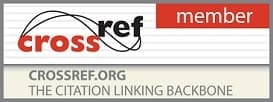- Printed Journal
- Indexed Journal
- Refereed Journal
- Peer Reviewed Journal
P-ISSN: 2394-1685 | E-ISSN: 2394-1693 | CODEN: IJPEJB
Impact Factor (RJIF): 5.38
2015, Vol. 1, Issue 3, Part B
Comparison of self-concept of school children belonging to high & low fitness groups
Author(s): Ku. Pushpalata M. Deshmukh
Abstract:
The purpose of the study was to find out the to compare the Self-Concepts of school children belonging to high and low fitness groups. The Objectives of this study was to find out whether there is significant difference in the school children belonging to high and low fitness groups. For this present study were 100 boys, were selected as a sample randomly for this study. (Simple random sampling method) The required data were collected from four different high school of Amravati, Maharashtra State, Age of the subjects were ranged from 13 to 15 years studying 9th and 10th classes to all the subjects and all of them voluntarily agreed to the test. The data on selected criterion based on the test. Data were collected from different high schools of Amravati districts of classes of the said schools. The research Scholar 1) AAHPER Youth Fitness test to identify the High and Low Fitness Groups, 2) Questionnaire of “Self- Concept Scale for school children. The criterions measures chosen the test were AAPHERD TEST (For Physical Fitness)The AAPHERD youth Fitness Test was taken to identify the High & low fitness groups. It contains 6 items. The method of administrating the test. The Standardized Questionnaire Developed by Dr. Mukta Rani Rastogi Department of Psychology Lakhnau University Lakhnau. To assess the Self- Concept measure and compare the Students To find out the significant difference between High and Low Fitness Groups of school children. To test the various dimensions of self concept was used. The Selfconcept inventory provides ten separate dimensions of self concept viz Health and Sex, Abilities, Self- Confidence, Self-Acceptance, worthiness, Present, Past and Future, Belie and Convictions, Feeling of shame and Guilt, Sociability, Emotional Maturity, It also gave a total concept score. Because subject were chosen from schools so available Hindi version of questionnaire was taken. ‘t’ test was employed to determine the significant mean difference between high & low fitness score of both groups. The level of significance was set at 0.05 level of confidence. Various dimensions of self concept of high & low fitness group are also computed by‘t’ test Under the circumstances of this study it seems reasonably fair to conclude that there was no differences in the self concept of high & low fitness groups. But when the various dimensions of self concept were compared separately it has been concluded that.
Pages: 61-64 | 1934 Views 169 Downloads
Download Full Article: Click Here
How to cite this article:
Ku. Pushpalata M. Deshmukh. Comparison of self-concept of school children belonging to high & low fitness groups. Int J Phys Educ Sports Health 2015;1(3):61-64.








 Research Journals
Research Journals